Buoyant Economies
What is a Buoyant Economy?
real per capita incomes are rising;
employment is rising and unemployment rates are falling, or there is full employment;
the distribution of income is growing more equitable, or is stable; and
levels of domestic and foreign debt (relative to GDP) are declining, or are stable.
It is not the amount of wealth, or level of income, that makes an economy buoyant; it is the growth in real per capita incomes. For example, the Philippines economy has a relatively low per capita income, but it has a buoyant economy because it experiences the attributes listed above such as rising real per capita incomes. Per capita incomes in Spain are 15 times higher than in the Philippines but Spain is not a buoyant economy because real per capita incomes are falling, as shown in the following chart.
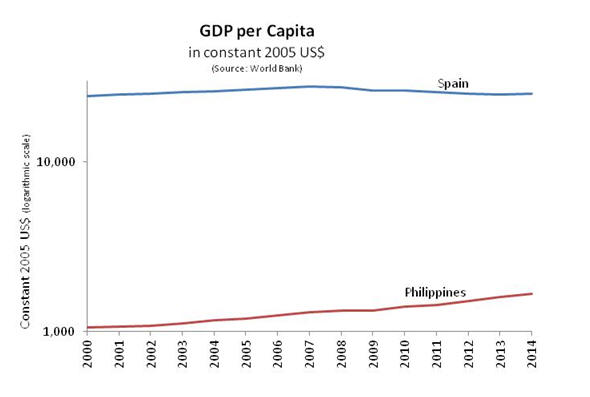
When we compare unemployment rates in Spain and the Philippines, we can see that until 2007, unemployment rates were similar. However, since then, unemployment in Spain has increased dramatically while they have been falling in the Philippines. Therefore, on the basis of employment, the Philippines economy is buoyant while the Spanish economy is not. The declining level of unemployment in 2014 may point to some improvement but this could not be said to generate a sufficient sense of security to imply that the economy was buoyant.
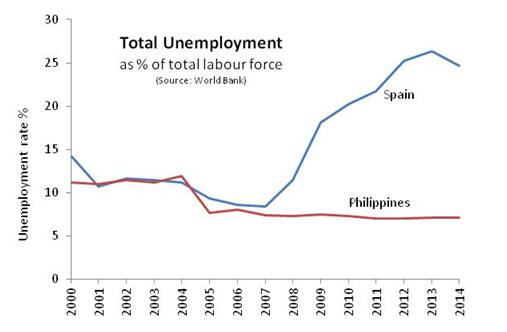
As shown in the following chart, income distribution is growing less equitable in Spain while in the Philippines it is growing more equitable. Therefore, on the basis of income distribution, the Philippines economy is buoyant while Spainís economy is not.
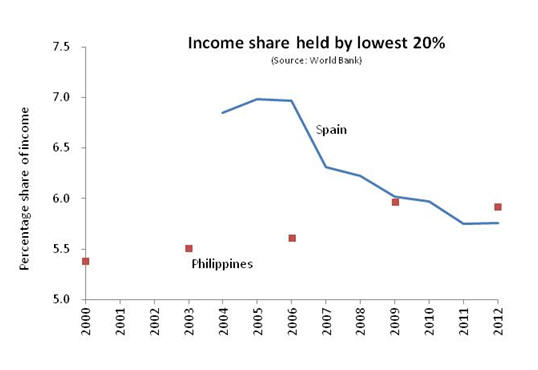
There was little information in the World Bank data base on the levels of external debt in Spain. Therefore, to compare the change in the levels of external debt, the current account balance in terms of shares of GDP for Spain and the Philippines were calculated to generate the following chart. Over the years shown, the net levels of debt in the Philippines would have declined by the equivalent of about 35% of GDP. However, in Spain the level of external debt has increased by the equivalent of around 45% of GDP over the same 10 years. The declining level of external debt in the Philippines would indicate that it was a buoyant economy. The rising levels of external debt in Spain would indicate that the Spanish economy has not been buoyant. The levels of foreign debt have declined slightly in Spain in 2013 and 2014. However, these improvements are not sufficient to suggest that Spain's economy is now buoyant.
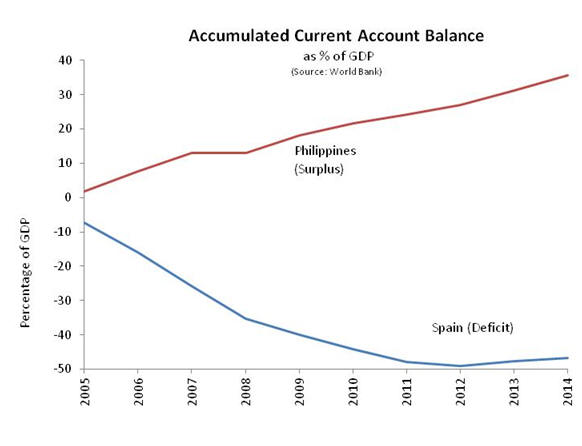
Using World Bank data that is no longer published for Spain, it was possible to compare the domestic debt levels for Spain and the Philippines in the following chart. The levels of domestic debt in Spain has risen to very high levels. This has contributed significantly to the low levels of economic growth in Spain. The falling levels of domestic debt have contributed to the improving the buoyancy of the Spanish economy. The levels of domestic debt relative to GDP in the Philippines have remained relatively stable, contributing to the buoyancy of that economy.
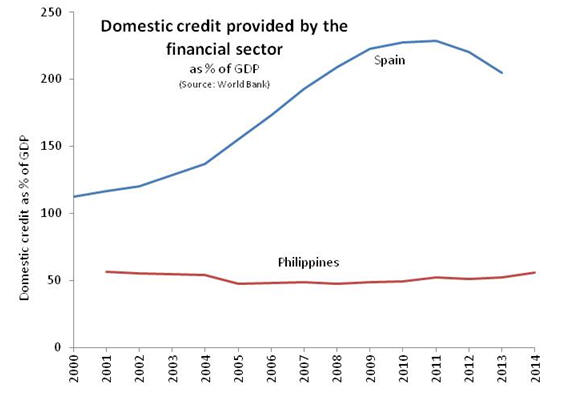
The levels of domestic debt are a significant factor in determining the level of buoyancy in an economy. The Buoyancy index is the inverse of the domestic credit to to GDP ratio. On the Buoyancy index web page, there is a comparison of the level of GDP to domestic debt in a number of countries.
Original posted: 31 March 2016
Latest update: 3 April 2016